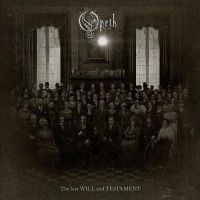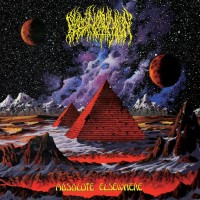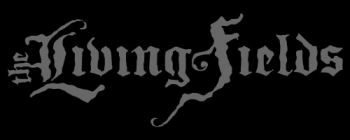The Living Fields - Biography
Logo
2004-
Biography
2002
In the autumn of 2002, The Living Fields was born as an outlet for guitarist Jason Muxlow's doom inclinations and populist beliefs. Fed up with both the tuneless brutality of the late '90s and right-wing idiocy pouring out of the metal community after September 11th, work began on initial compositions with the intent to combine doom-fueled songwriting with the progressive politics metal once stood for.
2003
The music progressed quickly, and before long, Muxlow was looking for a partner to bring a voice to the score. Jon Higgs was contacted on the basis of his energetic vocal performance with Monsterworks, but it was his similar world view and undiluted passion for metal that ultimately sealed the deal. Within weeks, Higgs had cut vocals for the newly-christened Empires Fall, and though far from perfect, the song clearly had legs. Higgs also proved dead-on lyrically, and both The Miseries Never Cease and A Leveling Spirit grew out of the ensuing enthusiasm.
As the material progressed, it was obvious that something extra was needed and as an experiment, string and piano arrangements were composed to fill the void on Empires Fall. Soon, all songs had full orchestral accompaniment, but as they evolved, the orchestral sounds were stripped out in favor of a more intimate and expressive string quartet. Not only did it sidestep the formidable task of mixing a full metal band with a full orchestra, but the simplicity and humility of the solo instruments favored them to both the aesthetic and ideological aims of the band.
2004
Comprised of four songs and clocking in at over 22 minutes, The Miseries Never Cease was released in 2004 to worldwide acclaim, with rave reviews from Metal Maniacs, Terrorizer, WormGear, Metal Norge and many others. TMNC opens with the epic ride of A Leveling Spirit, slips quietly into the early dawn lament of the title track, and concludes with the thrashing intensity of Empires Fall. Together, these songs stand as the first shot in our canon and set up a wide base to explore in the future.
2005
The Living Fields welcomed drummer extraordinaire Chad Walls (ex-Pustulated, Brodequin, Dislimb, Enter Self, ad inf.) to the fold. We immediately set to work on our full-length debut, but first had to overcome the growing pains of Chad's home studio build-out, John's move from New Zealand to London, and our collective developing of a method of track trading which could allow us to work collaboratively without ever breathing the same air. Things that would take 5 minutes to fix in person took days, if not weeks to sort out. In a word: "painful."
2006
Our quiet year was a result of Muxlow's endless frustration with the recording and mixing of the debut. Computer meltdowns, file incompatibility, ProTools instability, and everything turning to ash any time it was touched let to a near-total stop of all TLF activities. Thanksfully, the pains faded and the gears finally began to churn again in the autumn. On December 27th, the album was finally ready. Little did we know the wait was far from over.
2007
In January, we sent copies of The Living Fields to our industry contacts and it seemed that every month after another label would nibble our toe, only to swim away when we refused to turn over a completely finished (and paid for) album for nothing in return. When our last (and best) prospect fell through in June, we said to hell with it and decided to release the album on our own. More months went by researching duplicators, saving money and waiting for the final product. The album officially went on sale October 7, 2007.
There was much activity in the quiet months between finishing The Living Fields and getting the final product, though. Muxlow built a new home studio around MOTU's fantastic hardware and software, and with a stable working environment finally in place, the groundwork was laid for our sophomore effort, tentatively-titled Running Out of Daylight. Paradoxically, it's already shaping up to be both a simpler and more ambitious affair than The Living Fields. Songs are a more concise and to-the-point, relying more on riffs than atmosphere, but the album as a whole runs a wide gamut of tempos, textures, styles and moods. The title track - a sprawling, crawling opus dwelling on Galileo's final days in confinement - is offset by the 1-2 bombast of Vanguard (Statement of Intent) and mile-high anthem of "Glacial Movements
The Living Fields plays an eclectic smelt of metals fleshed out with piano, violins, viola, cello, acoustic guitars and a variety of internal and external musical influences. Though built around a core of deep respect for the early death /doom architects, The Living Fields' songs are rife with healthy doses of thrash, black, Viking and epic metals that reflect the underlying moods and themes of the lyrics. Higgs' storylines typically veer far to the left of the self-centered cliches of doom (love, loss and death) in favor of more universal horrors that flow freely from the seemingly endless parade of humanity's self-inflicted plagues. Oppression, injustice, suffering and man's inhumanity to man flourish with such virility in today's world that merely turning on the news offers up ample material for an entire album. Reading any book of history provides enough for a dozen.
Though friends, the members of The Living Fields have never met, much less played together. We hope to close that divide in the coming year, but for now we do what we must
Source: http://www.thelivingfields.com/biography/index.php
In the autumn of 2002, The Living Fields was born as an outlet for guitarist Jason Muxlow's doom inclinations and populist beliefs. Fed up with both the tuneless brutality of the late '90s and right-wing idiocy pouring out of the metal community after September 11th, work began on initial compositions with the intent to combine doom-fueled songwriting with the progressive politics metal once stood for.
2003
The music progressed quickly, and before long, Muxlow was looking for a partner to bring a voice to the score. Jon Higgs was contacted on the basis of his energetic vocal performance with Monsterworks, but it was his similar world view and undiluted passion for metal that ultimately sealed the deal. Within weeks, Higgs had cut vocals for the newly-christened Empires Fall, and though far from perfect, the song clearly had legs. Higgs also proved dead-on lyrically, and both The Miseries Never Cease and A Leveling Spirit grew out of the ensuing enthusiasm.
As the material progressed, it was obvious that something extra was needed and as an experiment, string and piano arrangements were composed to fill the void on Empires Fall. Soon, all songs had full orchestral accompaniment, but as they evolved, the orchestral sounds were stripped out in favor of a more intimate and expressive string quartet. Not only did it sidestep the formidable task of mixing a full metal band with a full orchestra, but the simplicity and humility of the solo instruments favored them to both the aesthetic and ideological aims of the band.
2004
Comprised of four songs and clocking in at over 22 minutes, The Miseries Never Cease was released in 2004 to worldwide acclaim, with rave reviews from Metal Maniacs, Terrorizer, WormGear, Metal Norge and many others. TMNC opens with the epic ride of A Leveling Spirit, slips quietly into the early dawn lament of the title track, and concludes with the thrashing intensity of Empires Fall. Together, these songs stand as the first shot in our canon and set up a wide base to explore in the future.
2005
The Living Fields welcomed drummer extraordinaire Chad Walls (ex-Pustulated, Brodequin, Dislimb, Enter Self, ad inf.) to the fold. We immediately set to work on our full-length debut, but first had to overcome the growing pains of Chad's home studio build-out, John's move from New Zealand to London, and our collective developing of a method of track trading which could allow us to work collaboratively without ever breathing the same air. Things that would take 5 minutes to fix in person took days, if not weeks to sort out. In a word: "painful."
2006
Our quiet year was a result of Muxlow's endless frustration with the recording and mixing of the debut. Computer meltdowns, file incompatibility, ProTools instability, and everything turning to ash any time it was touched let to a near-total stop of all TLF activities. Thanksfully, the pains faded and the gears finally began to churn again in the autumn. On December 27th, the album was finally ready. Little did we know the wait was far from over.
2007
In January, we sent copies of The Living Fields to our industry contacts and it seemed that every month after another label would nibble our toe, only to swim away when we refused to turn over a completely finished (and paid for) album for nothing in return. When our last (and best) prospect fell through in June, we said to hell with it and decided to release the album on our own. More months went by researching duplicators, saving money and waiting for the final product. The album officially went on sale October 7, 2007.
There was much activity in the quiet months between finishing The Living Fields and getting the final product, though. Muxlow built a new home studio around MOTU's fantastic hardware and software, and with a stable working environment finally in place, the groundwork was laid for our sophomore effort, tentatively-titled Running Out of Daylight. Paradoxically, it's already shaping up to be both a simpler and more ambitious affair than The Living Fields. Songs are a more concise and to-the-point, relying more on riffs than atmosphere, but the album as a whole runs a wide gamut of tempos, textures, styles and moods. The title track - a sprawling, crawling opus dwelling on Galileo's final days in confinement - is offset by the 1-2 bombast of Vanguard (Statement of Intent) and mile-high anthem of "Glacial Movements
The Living Fields plays an eclectic smelt of metals fleshed out with piano, violins, viola, cello, acoustic guitars and a variety of internal and external musical influences. Though built around a core of deep respect for the early death /doom architects, The Living Fields' songs are rife with healthy doses of thrash, black, Viking and epic metals that reflect the underlying moods and themes of the lyrics. Higgs' storylines typically veer far to the left of the self-centered cliches of doom (love, loss and death) in favor of more universal horrors that flow freely from the seemingly endless parade of humanity's self-inflicted plagues. Oppression, injustice, suffering and man's inhumanity to man flourish with such virility in today's world that merely turning on the news offers up ample material for an entire album. Reading any book of history provides enough for a dozen.
Though friends, the members of The Living Fields have never met, much less played together. We hope to close that divide in the coming year, but for now we do what we must
Source: http://www.thelivingfields.com/biography/index.php




